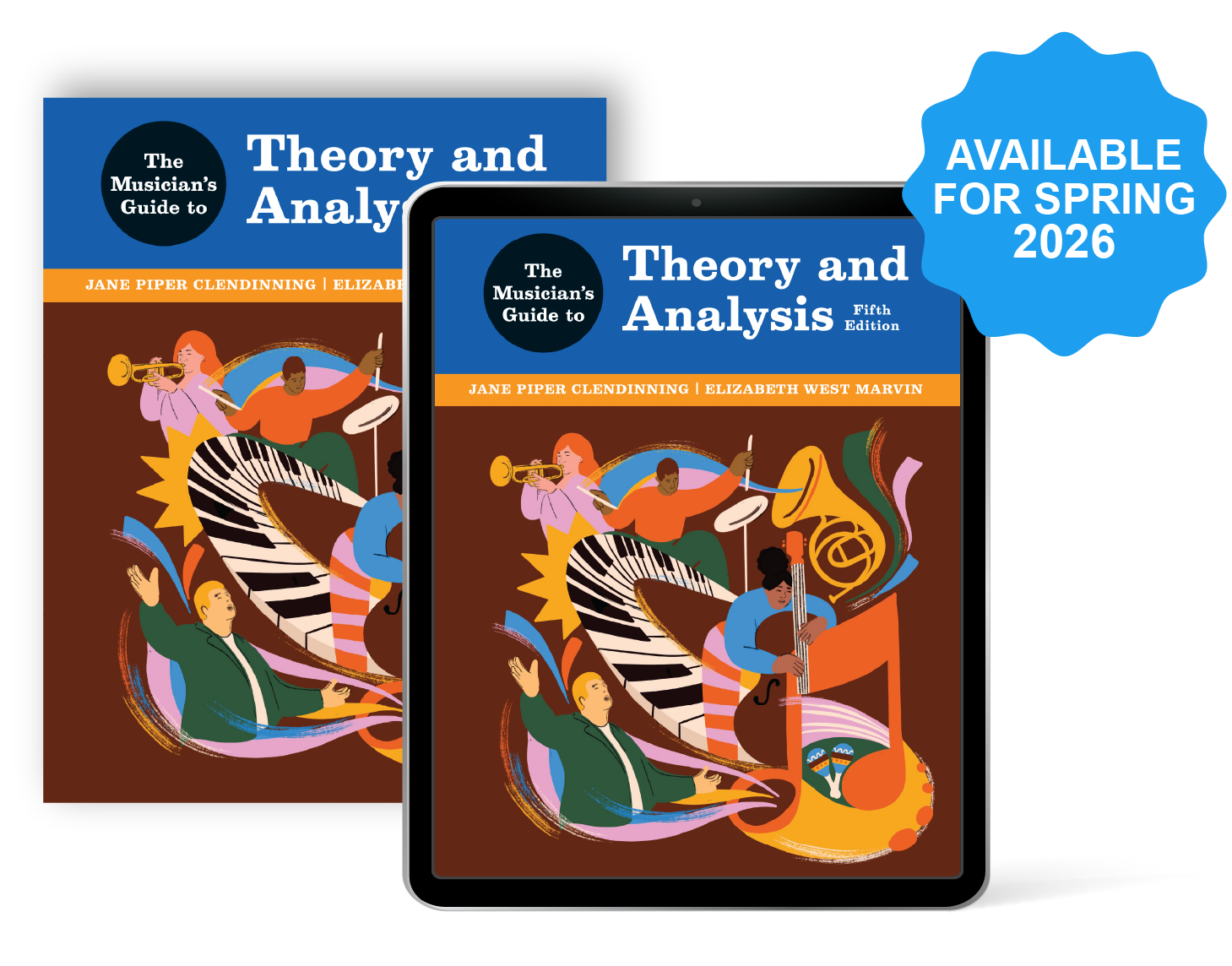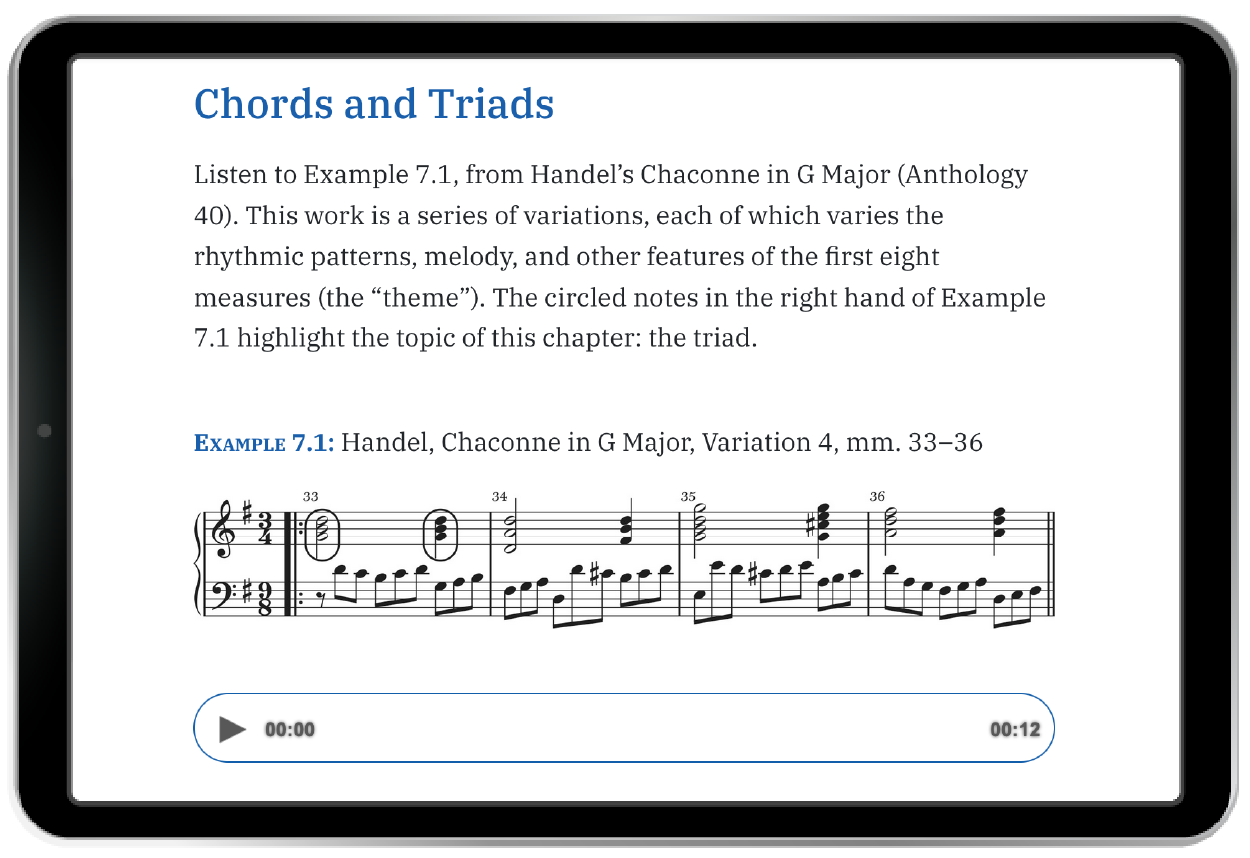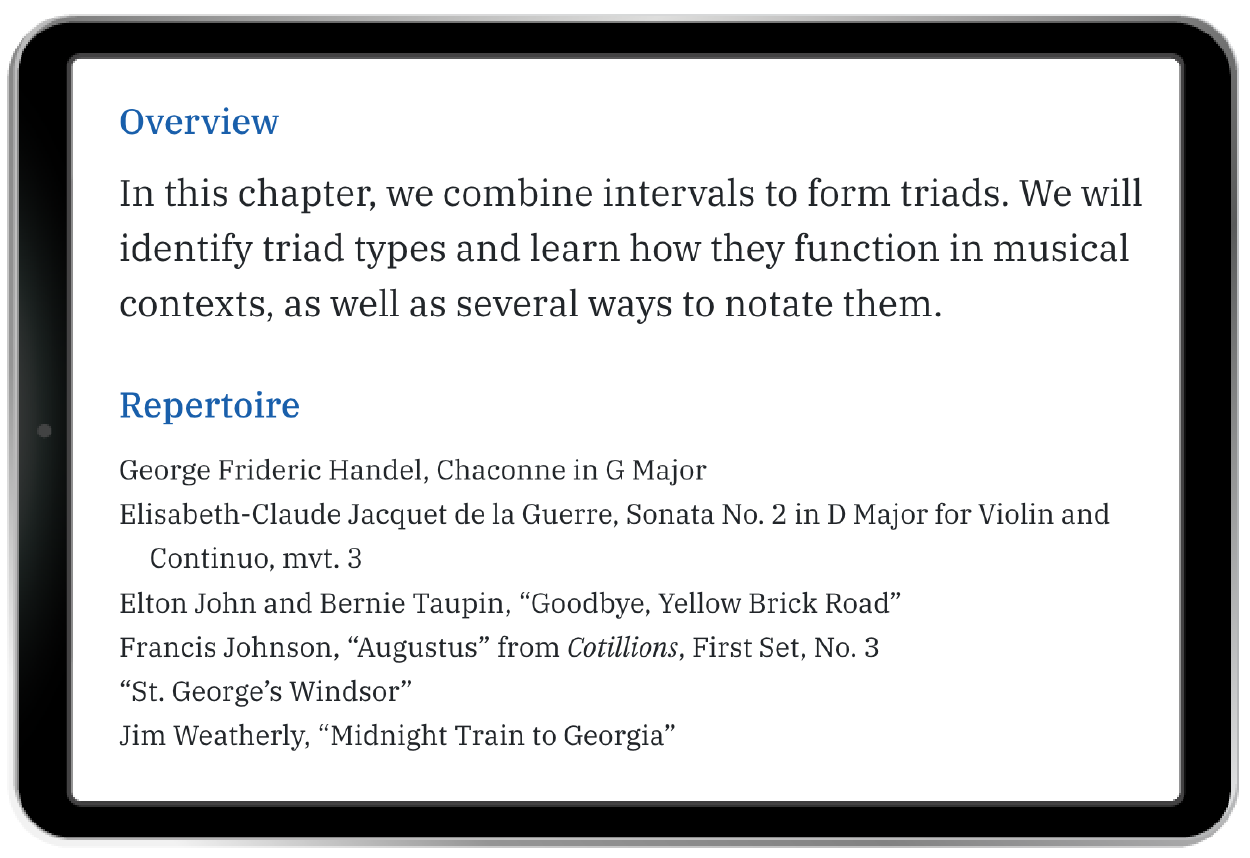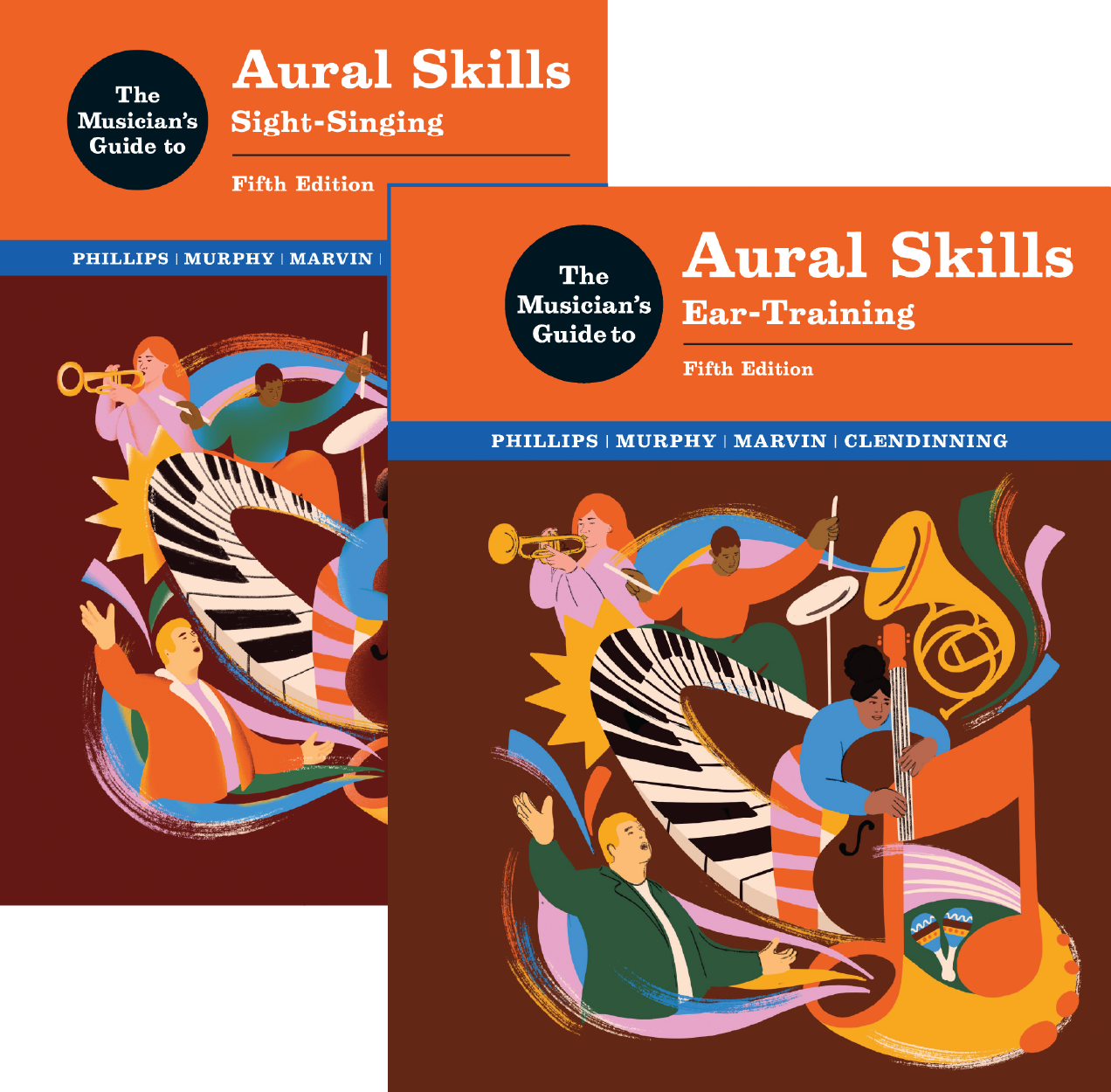

A theory text for today’s music student
Explore the demo chapter

Spend some time reading through Chapter 7, Triads to see the engaging writing style, accessible explanations, and strong pedagogical structure in The Musician’s Guide to Theory and Analysis.

A complete resource to help students learn, build, and practice their theory skills
Built around a listening pathway that guides students through concepts and skills, The Musician’s Guide to Theory and Analysis gives your students a clear road to success. Chapters are supported with consistent pedagogical features to support student learning.

A broad repertoire keeps students engaged and highlights a wide range of music-making
The Musician’s Guide to Theory and Analysis has always placed music before theory, introducing every concept with examples from a wide range of music, from Bach to Lin-Manuel Miranda, providing students with examples from a variety of music genres and composers.

A flexible, complete curriculum for theory and aural skills
The Musician’s Guide to Theory and Analysis covers every topic in the undergraduate theory sequence—from fundamentals to form to post-tonal theory—while the associated aural skills volumes help you coordinate theory and aural skills.
Hello from the authors...
Instructors, get access to a preview of the ebook and online resources
Are you also interested in receiving a physical copy?

Meet your marketing manager: Emily Erickson
Hello! I'm Emily. I've been with Norton for four years now and love working with instructors to find out what makes their music courses unique and how Norton's resources energize students.
I play the flute and the piano and there's almost always a record spinning in our living room. My husband and I like to dance with our two-year-old and introduce him to new sounds.
The fifth edition of Musician's Guide to Theory and Analysis has an incredible suite of resources and expanded coverage of pop, traditional, and global music. I can't wait to talk more about your theory course and how Norton's resources can help your students.

Copyright © W. W. Norton & Company, Inc. 2026







